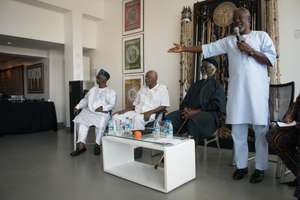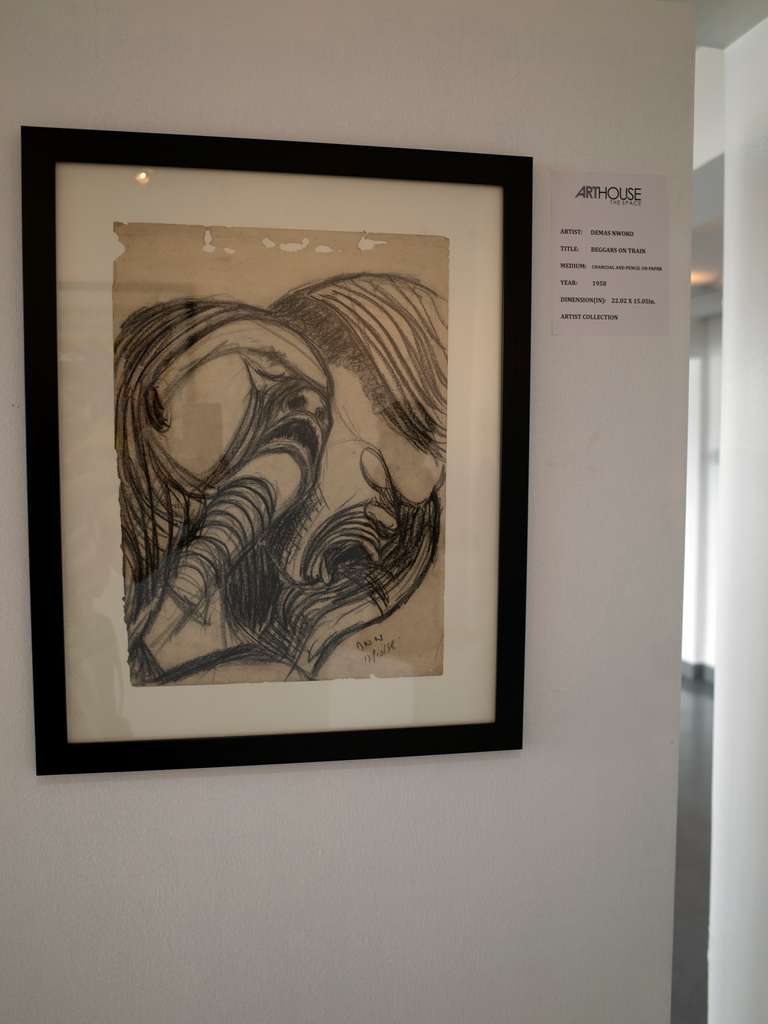Legacies of the Zaria Rebels

The ArtoP visit to Lagos in November 2019 included attending a busy schedule of cultural events including LagosPhoto Festival, ArtXLagos and the Lagos ArtSummit. Alongside the contemporary art exhibited across the city; from Lagos Mainland to Lagos Island, Victoria Island and Lekki, one exhibition that couldn't be missed was the ArtHouse Contemporary 'Zaria Art Society: Celebration of Legacies'. The exhibition opened at the Kia Showroom on Victoria Island on the 27th October and ran till the 15th November and the Guardian Nigeria, noted that "One of the most iconic groups in Nigerian visual arts scene, the 'Zaria Rebels' are back on the exhibition circuit' (Guardian Nigeria, 27th Oct 2019).
The Zaria Art Society emerged at the time of Nigerian independence and were popularly called the ‘Zaria Rebels’ for their rejection of the precepts of the mainly British art educators at what is now Ahmadu Bello university at Zaria. These British art lecturers had advocated a British art curriculum looking to the art produced in New York or London. This art movement became known as Natural Synthesis in which modernist techniques of painting were embraced but directed attention to the multiplicity of local visual art traditions (and their art histories) within Nigeria, such as the historic Nok sculptures that had been found in northern Nigeria or the Uli painting/drawing of the Igbo-speaking area produced by women to beautify the female body and to decorate the walls of compounds (a subsequent art movement developed by Igbo speaking artists post the Biafran civil war known as the Uli movement which drew on the art forms and cultural traditions of south eastern Nigeria). Natural synthesis did not seek to reproduce the forms of local visual traditions but rather referenced them in creating new modernist yet specifically Nigerian motifs and iconographies. By so doing, they cut across the divisions of different localities or ethnicities to address a new public - that of the emergent Nigerian citizen in the newly independent nation state Nigeria.
This exhibition was a unique opportunity to see a comprehensive range of artworks produced at that time by the founders of the Zaria Art Society, Demas Nwoko, Yusuf Grillo, Bruce Onobrakpeya, Uche Okeke and Oseloka Osadebe (who subsequently moved to the USA in 1964). The exhibition was carefully curated by Professor Jerry Buhari from the Ahmadu Bello University in Zaria, who also ably chaired the important panel discussion on the 2nd of November with some of the artists in attendance, namely Bruce Onobrakpeya, Yusuf Grillo and Demas Nwoko. During the panel discussion Professor Bruce Onobrakpeya contested their designation as Zaria rebels arguing that they were radical in their approach as opposed to their designation as so called “rebels”. He highlighted how all the members of the group were dedicated to developing their art, individually and collectively, within the university to the extent of working together on their art at every opportunity, whether during the evenings or lunch and other leisure breaks. Yusuf Grillo and Demas Nwoko also gave insights into their approaches at that time as well as reflecting on their common collective endeavour.
The artists decolonised Western-centric educational frameworks, responding creatively to contest the impositions of Western art histories, the hegemonic narratives of colonial history or responding to contemporary political events and experiences. Their work is key to understanding the narratives of contemporary Nigerian art as they forged a pioneer modernist Nigerian art movement that is now recognised around the world. The exhibition was unique in that it brought their work together as one exhibition.

